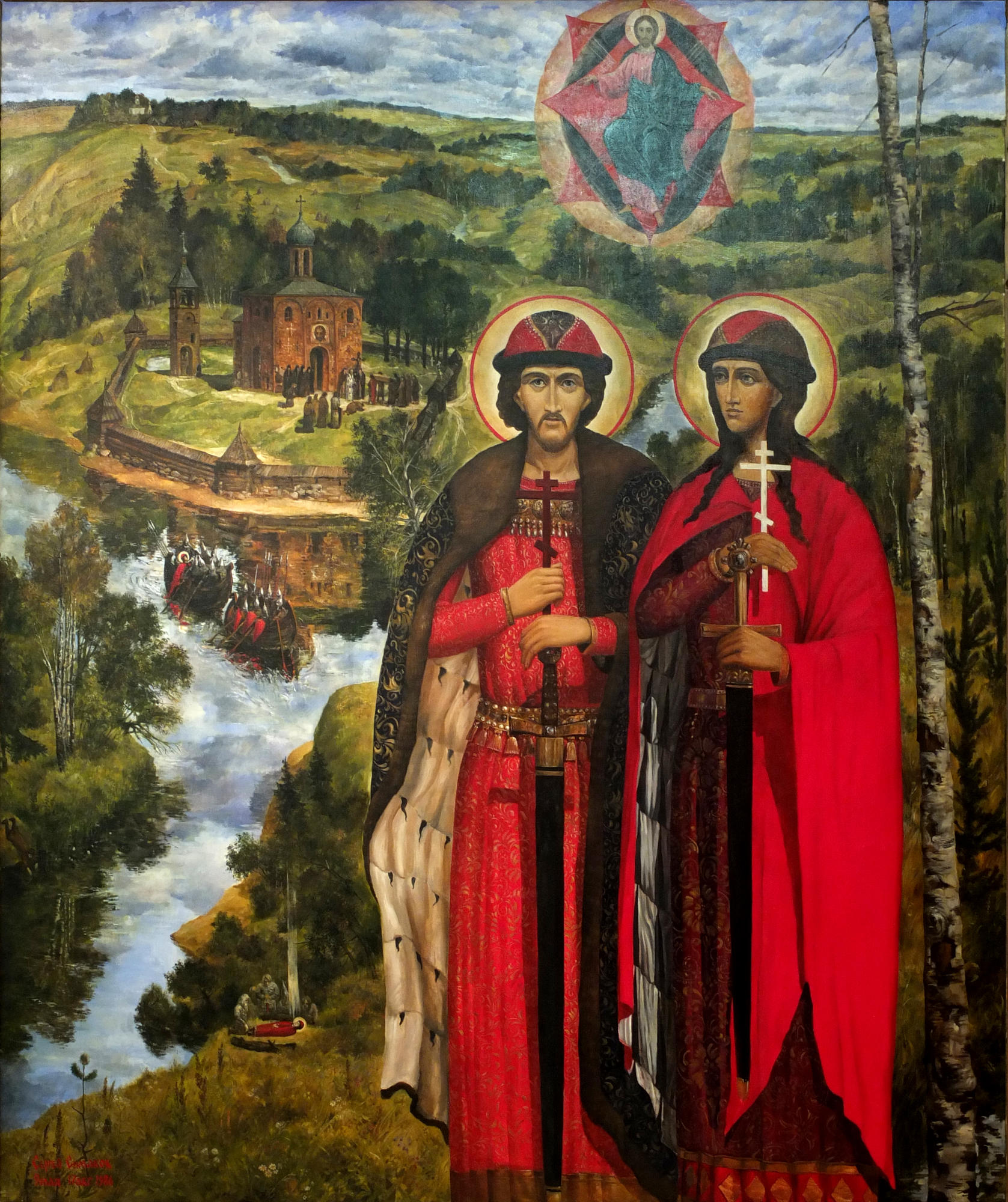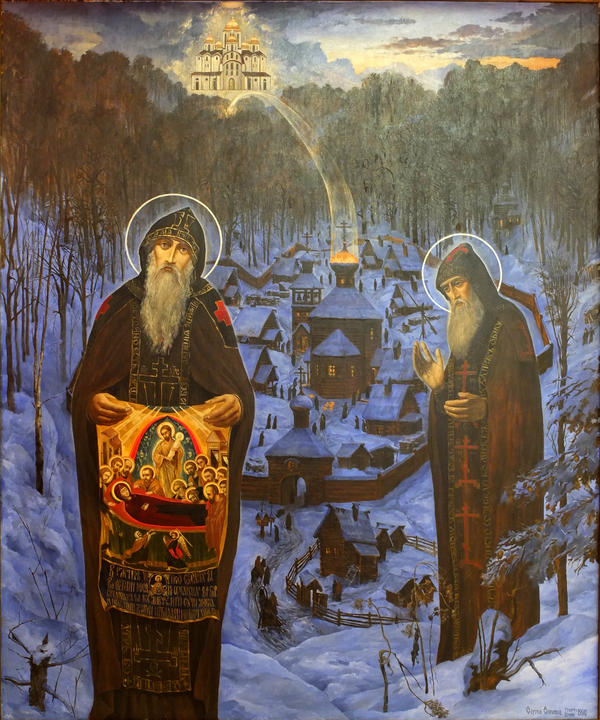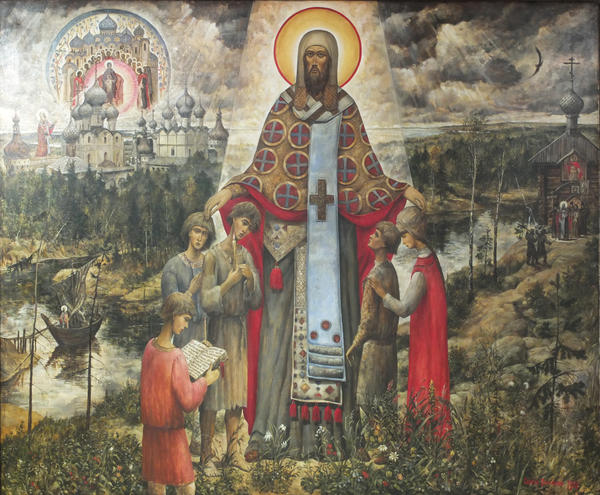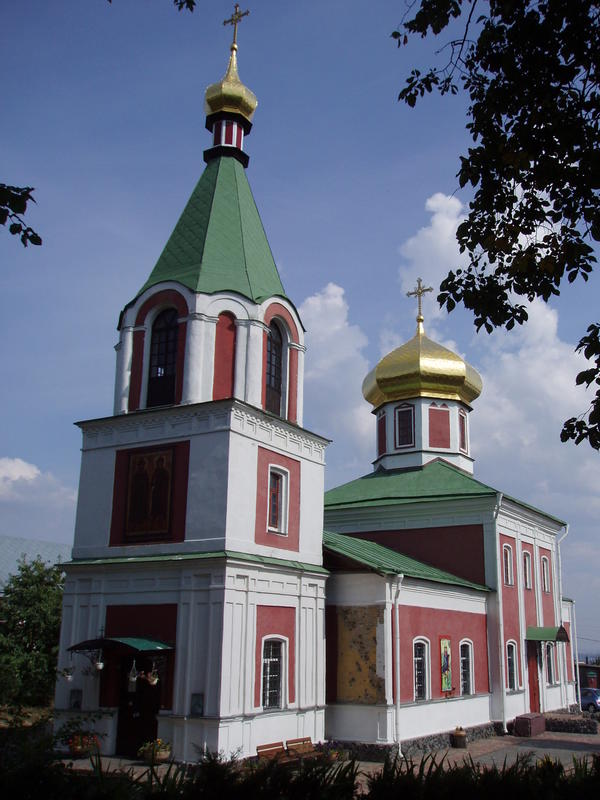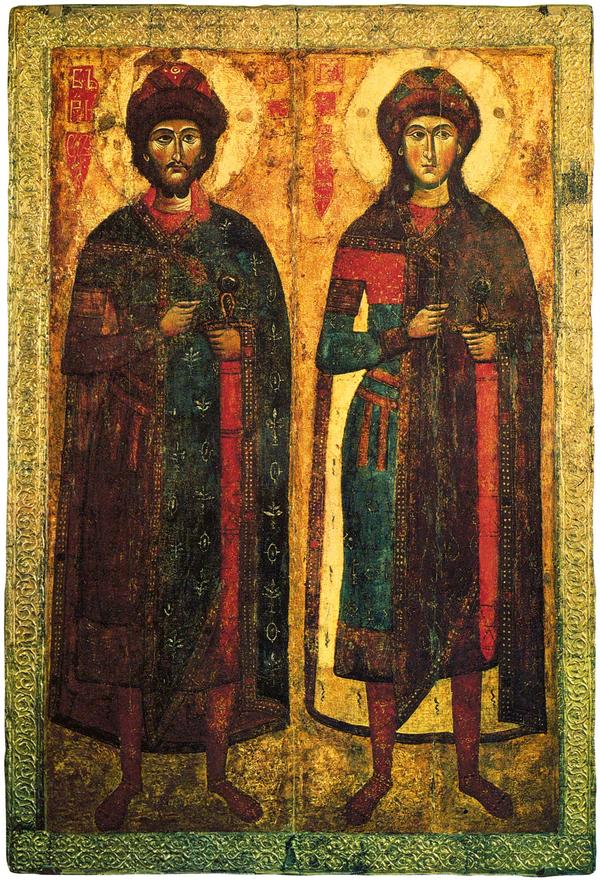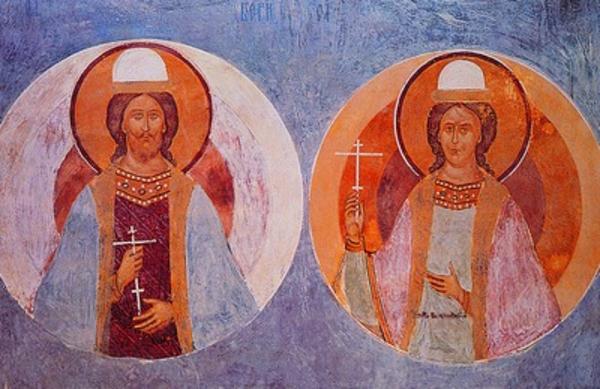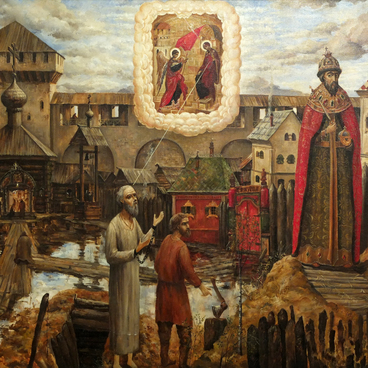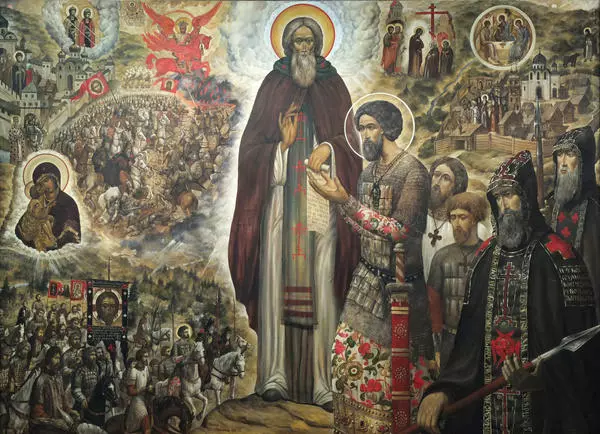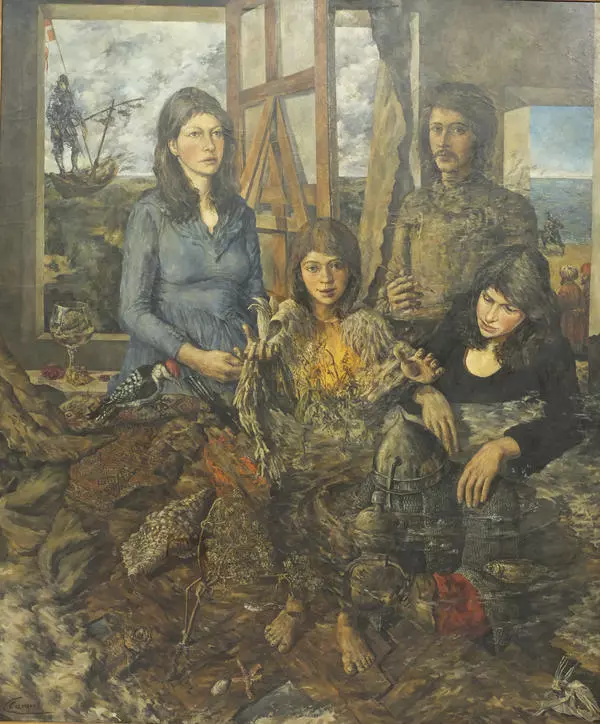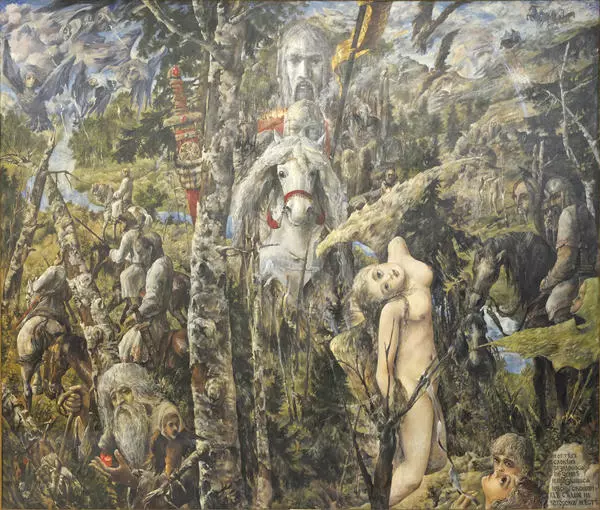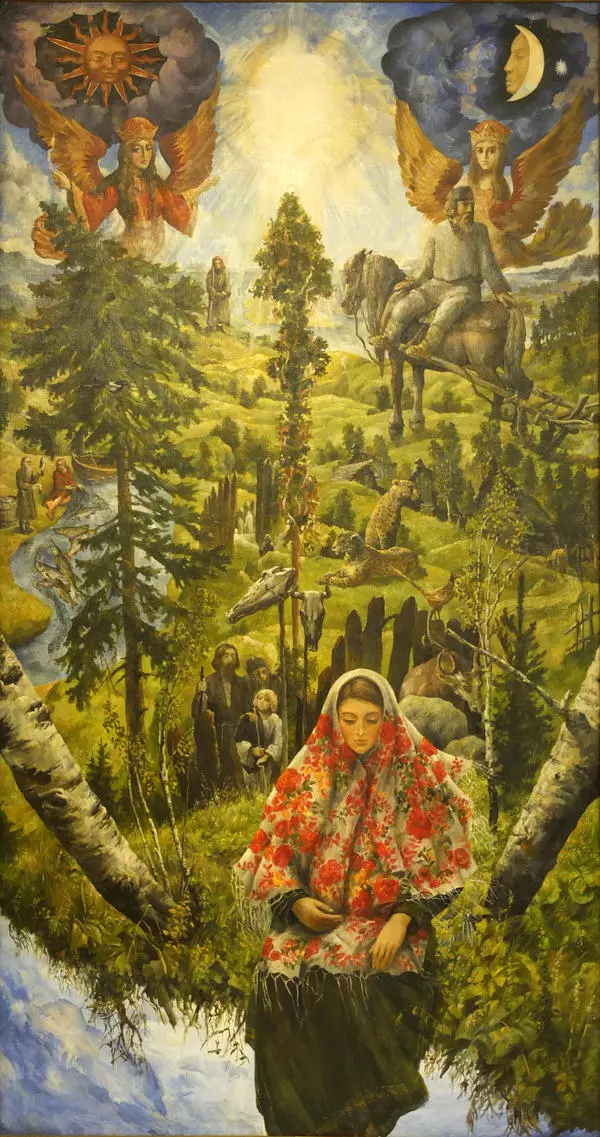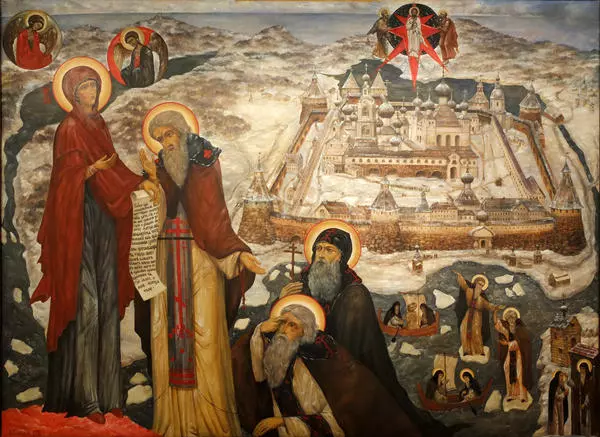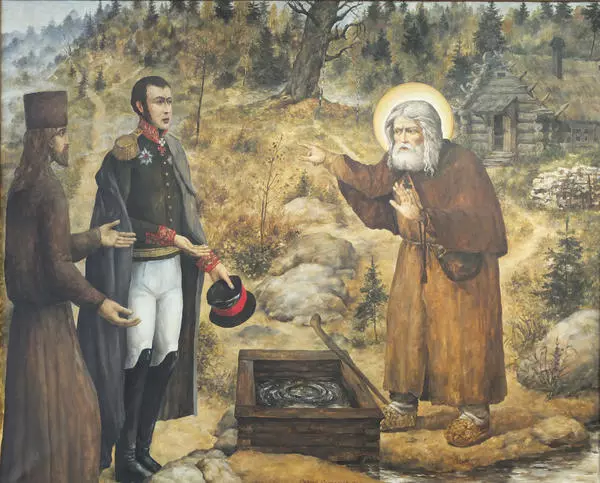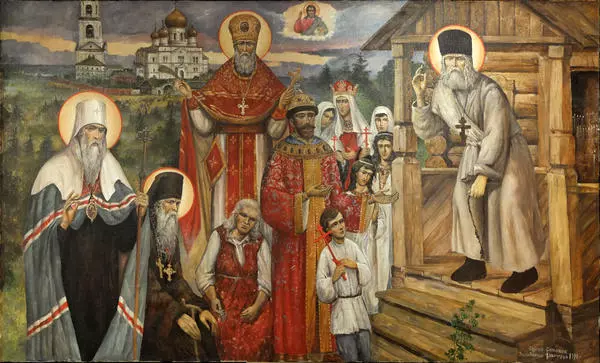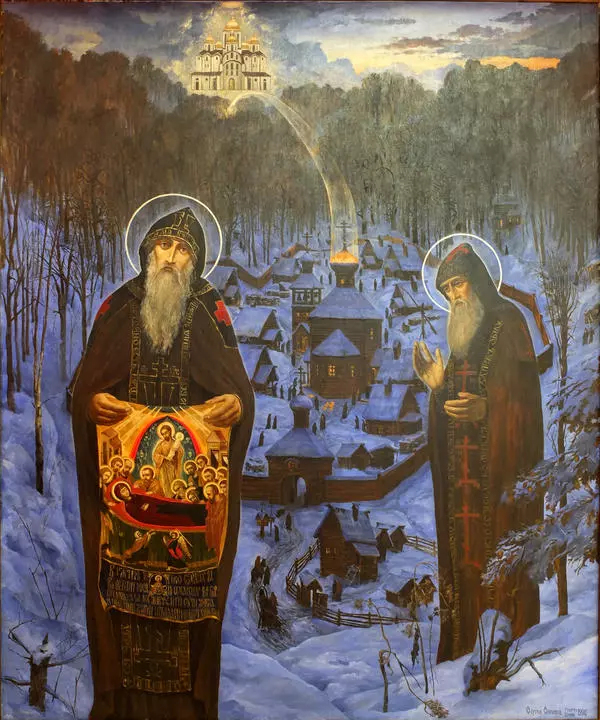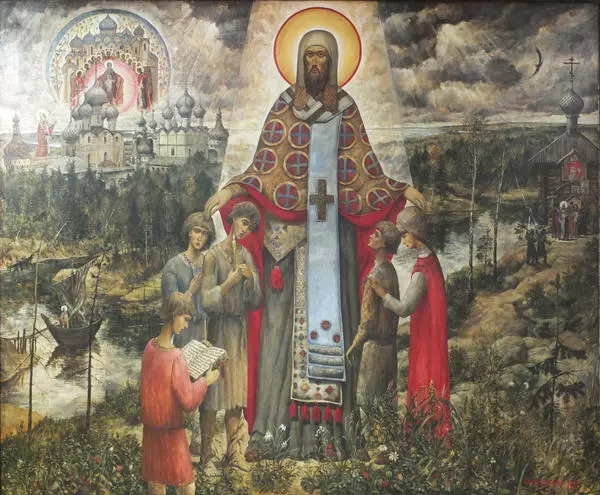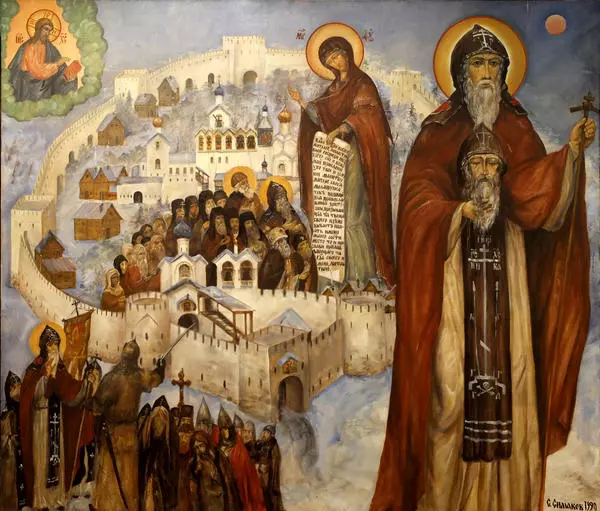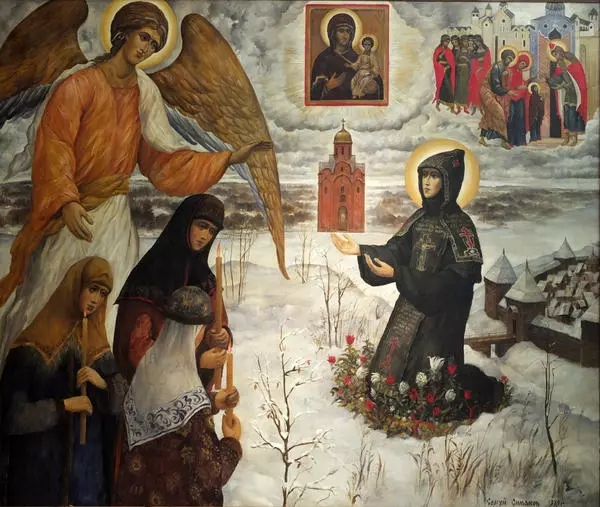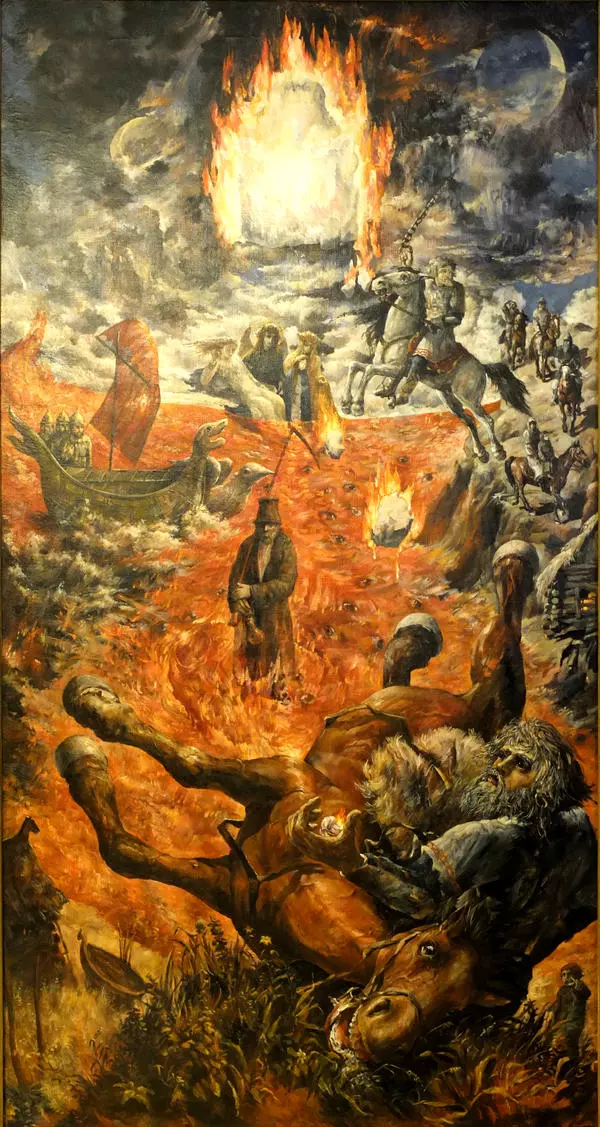In this painting, Sergey Simakov depicted the first Russian saints — Boris and Gleb, the sons of Duke Vladimir Svyatoslavovich. According to the official version, their elder brother Svyatopolk ordered them to be killed. For this, he was named The Accursed in the old Russian sources, while Boris and Gleb were canonized as martyrs — passion-bearers.
Boris and Gleb
Время создания
1986
Размер
180x150 cm
Техника
Oil on canvas
Коллекция
Выставка
0
Открыть в приложении#1
Simakov S.B.
Boris and Gleb
#2
#3
The composition of the painting is structured in the spirit of hagiographical icons of the 17th century, i.e. the central figures of the saints are surrounded by miniature scenes, related to their lives. Simakov used the same style for creating paintings Saint Anthony and Saint Theodosius of the Kiev Caves and Leontius of Rostov. As in those cases, monumental figures of saints are surrounded by a lyrical central Russian landscape.
Sergey Simakov, Saint Anthony and Saint Theodosius of the Kiev Caves, 1986
Source: Yaroslavl Regional State Autonomous Institute of Culture Uglich State Historical, Architectural and Art Museum
#4
Sergey Simakov, Leontius of Rostov, 1987 Source: Yaroslavl Regional State Autonomous Institute of Culture Uglich State Historical, Architectural and Art Museum
#5
In the painting, Simakov pictured scenes, related to the murder of the brothers. Closer to the left corner, there is a procession carrying a coffin with Boris’s remains towards a small church. He was killed on the bank of the Alta River. Below, in the waters of the Smyadyn River, he depicted so-called strugi, i.e. Russian flat-bottomed boats, in which Gleb was murdered. His body is also drawn below, on the riverbank. Some travelers bent over him. They found the duke’s remains by a column of light.
#6
The Borisoglebsk church of the 19th century in Vyshgorod, restored after the war
Source: wikipedia.org
At first, Boris and Gleb were buried near Kiev — at the church of Saint Basil in Vyshgorod. But the church suffered from fire. By order of another elder brother of them, Yaroslav the Wise, a stone one-domed Borisoglebsk church was erected here. Presumably, it was destroyed by the Tatar-Mongol troops in 1240, at the same time the remains of the martyrs disappeared. Later, the church was rebuilt several times, and in 1991 it was restored in line with preserved sketches of the 19th century.
#8
Though Boris and Gleb were revered as advocates of Russian dukes, people also attributed miracles of healing to them: it is considered that a great number of healing cases occurred at their coffin. In the Russian icon painting, their image spread already in the 13th — early 14th century. At that time, an icon, coming from the Savva-Vishersky monastery, was created with one of the oldest images of Boris and Gleb. At the same time Moscow icon painter Dionysius depicted the holy brothers on a fresco painting from the Cathedral of the Nativity of the Blessed Virgin Mary in the Ferapontov monastery.
Icon from the Savva-Vishersky monastery, the 13th — early 14th century
Source: wikipedia.org
#9
Dionysius, Boris and Gleb, fresco painting from the Cathedral of the Nativity of the Blessed Virgin Mary in the Ferapontov monastery, 1502Source: wikipedia.org
#10
Ivan Bilibin, Saint Boris and Gleb in a Boat
Source: wikipedia.org
Secular painters referred to the image of Boris and Gleb quite often too. Nikolay Semenov depicted them in a realistic manner, and Ivan Bilibin, a member of the World of Art union did it in the style of Russian fairy tales. Artist and mystic philosopher Nicholas Roerich depicted the brothers sailing on a rowing boat on the background of Heaven’s light.
#11
Nicholas Roerich, Boris and Gleb, 1942Source: wikipedia.org
#12
Yaroslavl Regional State Autonomous Institute of Culture Uglich State Historical, Architectural and Art Museum
читать дальшескрыть
00:00
02:03
1x
Boris and Gleb
Время создания
1986
Размер
180x150 cm
Техника
Oil on canvas
Коллекция
Выставка
0
Открыть в приложении
Поделиться
